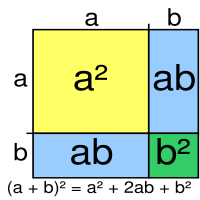LESSON 7: INTRODUCTION TO SURDS
Contents
SURDS
Introduction
Surds, indices and logarithms are closely related. They are, most of the time, studied together. So the exposure to indices and logarithms in previous lessons will help you to understand the use of surds. Numbers whose square roots cannot be determined in terms of rational numbers e.g,.√2,√3,√5 etc.are called surds. Such numbers occur frequently in Trigonometry when calculating the ratio of angles; e.g, Cos 30=√3/2, tan 60=√3,tan30=1/√3; and in coordinate geometry in the calculation of distances. You will therefore find it useful to have a sound knowledge of surds.
|
At the end 0f this unit the student should be able to:
|
Definition
You should be able to recall from your previous knowledge of numbers that a number that is "square" is one that can be expressed as the square of some other rational number. For example
- 9=32
- 81=92
- (4/9)=(2/3)2
But not all numbers are rational numbers,that is they do not have exact square roots. Examples are
- √2
- √3
- √5
- √8
- 2√3, etc
Such numbers are known as irrational numbers.
Although approximate square roots of such (i.e, irrational) numbers can be found from tables of square roots, it is usually simpler to work with SURDS themselves. Note also that at this level whenever you deal with square roots, only positive square roots are considered.
Reduction to Basic Form
Any surd which contains a square number as a factor within the radical (i.e, the square root sign) is not in the basic form. For example
- √2
- √50
- √108
are not in the basic form as they can be reduced further through simplification. The following examples will illustrate this concept: 1.1 '√27=√(9X3)=''''√9√3=3√3 1.2 √50=√(25 X 2)=√25√2=5√2 1.3√108=√(36 X 3)=√36√3=6√3 From(1.1), (1.2) and 1.3, 3√3,5√2 and 6√3 cannot be simplified further; they have been reduced to the basic form. Surds that cannot be further simplified are said to be in their basic form.
Addition and Subtraction of Similar Surds
Surds that are in the basic form can be added and subtracted. Example 2 below will illustrate the idea. 2.1 Simplify √80 +√20 -√45 Solution: First reduce all to their basic forms That is,√80+√20-√45=√(16X5)+√(4X5)-√(9X5) RHS(the right hand side):=4√ 5 +2√5-3√5 = 6√5 -3√5 = 3√5 Notice that the above surds can be added or subtracted because they are in similar form,that is,numbers under the radical signs are the same and they have the same index. Mixed surds such as 2√2 + 2√7 - 2√3 are not similar, so they cannot be added or subtracted, that is, they cannot be simplified further.
Multiplication and Division of Surds
Multiplication and division of surds are carried out two basic laws of surds. i)For multiplication of surds, the rule is: √a√b=√(a.b) Examples: 3a)√5 √3 = √(5X3)=√(15) 3b)√ 2√7 = √(2X7)=√(14) For division the following rule applies: √a/√b=√(a/b) Examples: 4a)'√6/√3=&radic(6/3)=√2 4b)√18/√3=√(18/3)=√6
Rationalizing the Denominator
A surd such as √3/5 cannot be simplified further; but one such as 2/√3 can be written in a convenient form, as it is not normal to have the radical in the denominator. The process of removing the radical from the denominator is called rationalization. In order to carry out rationalization, you need to know about conjugate surds.
|
Conjugate Surds: Given a surd (a-√b), its conjugate is defined as (a+√b) and vice-versa. |
When a surd is multiplied by its conjugate, their product is no more a surd. For example, Multiply (a+√b) by its conjugate (a-√b) to get (a+√b)(a-√b)=a2-a√b+a√b-√b√b=a2-√b√b=a2-b2 You have seen that the result is not a surd. Now, the rule is: To rationalize a radical denominator of a surd, multiply both numerator and denominator of the surd by the conjugate of the denominator.
Ebrima 15:44, 26 February 2007 (CET)
